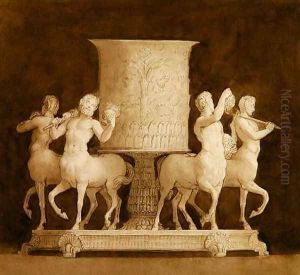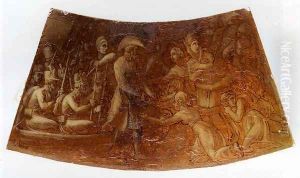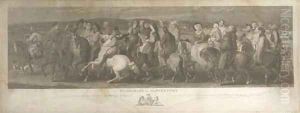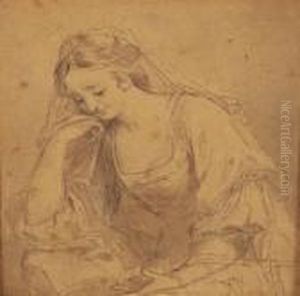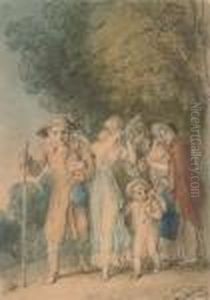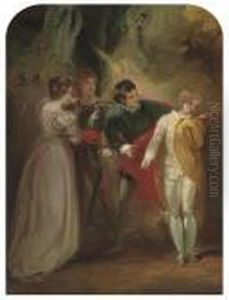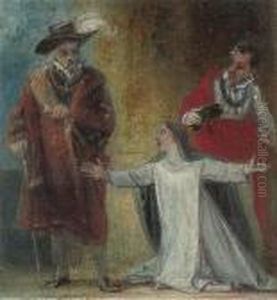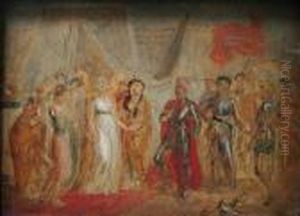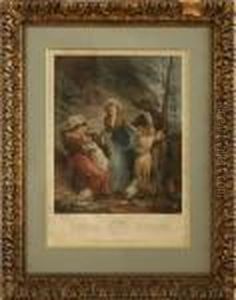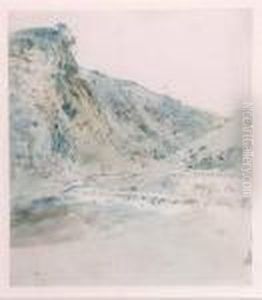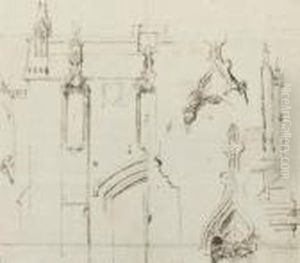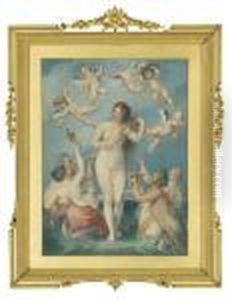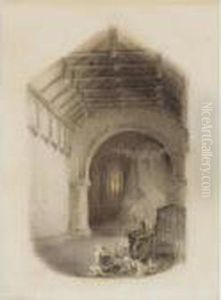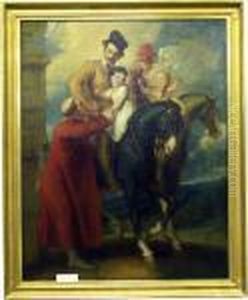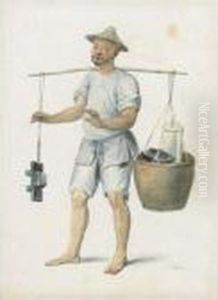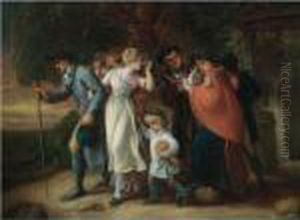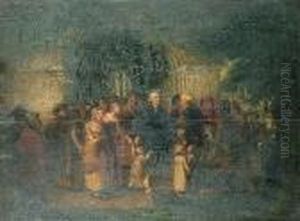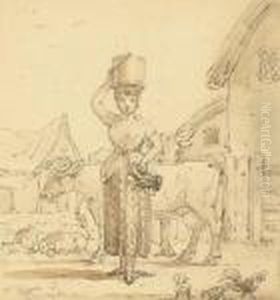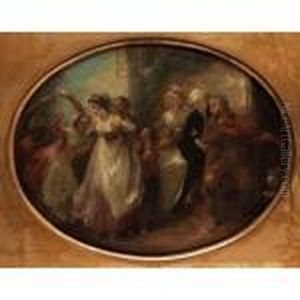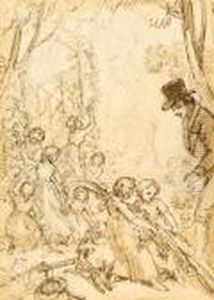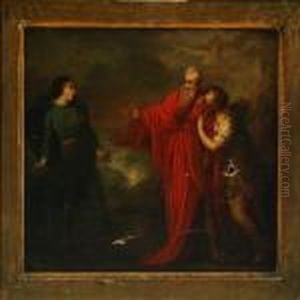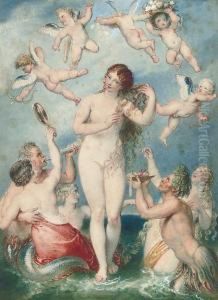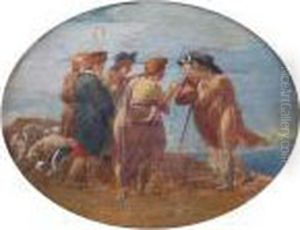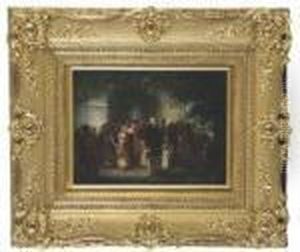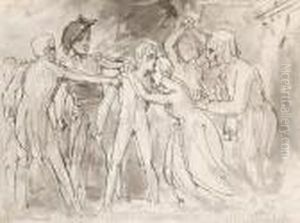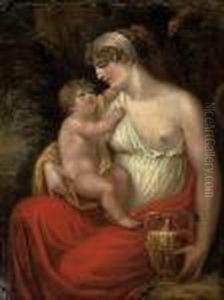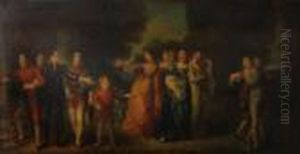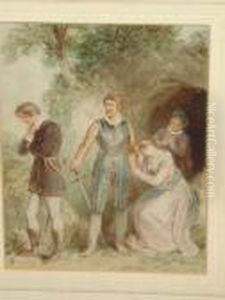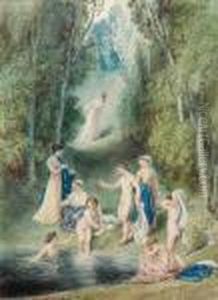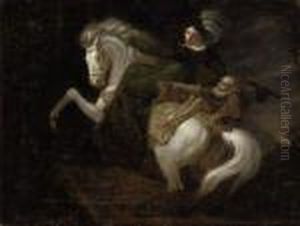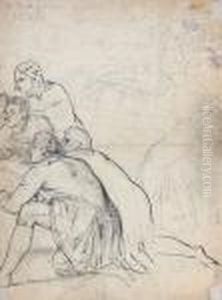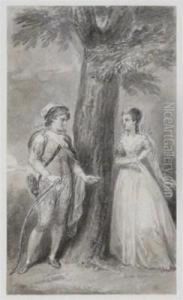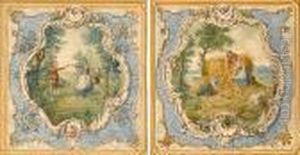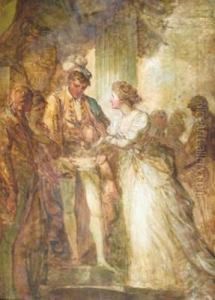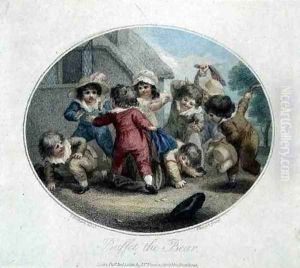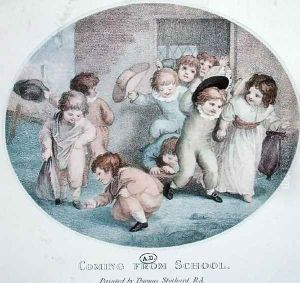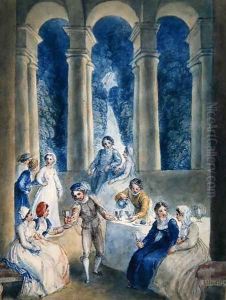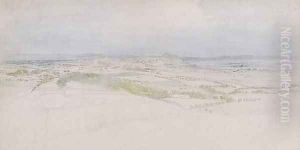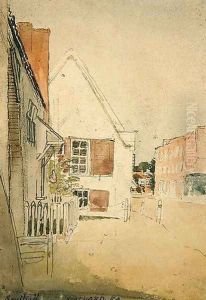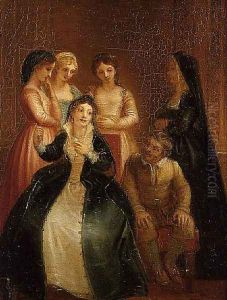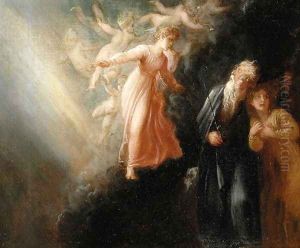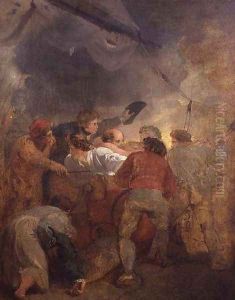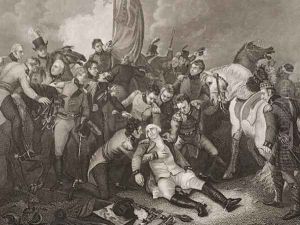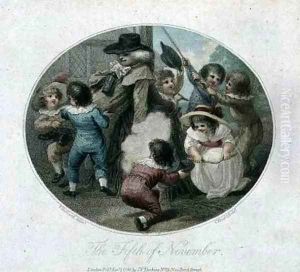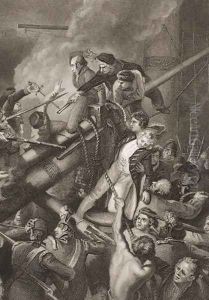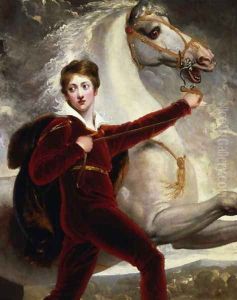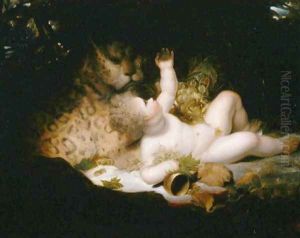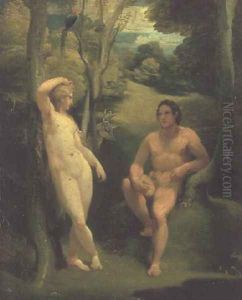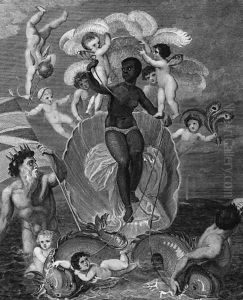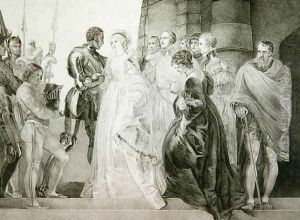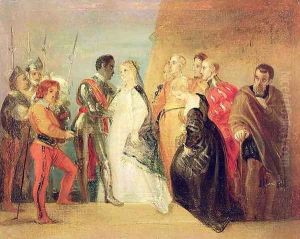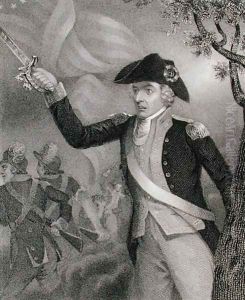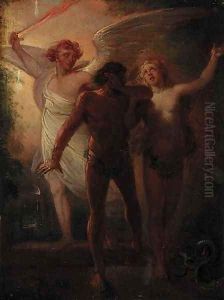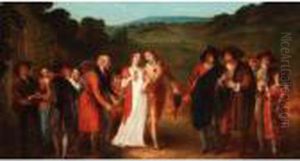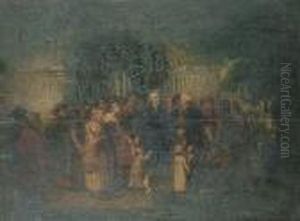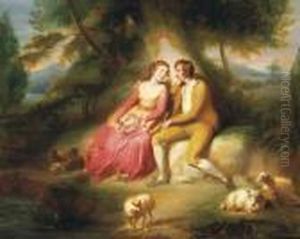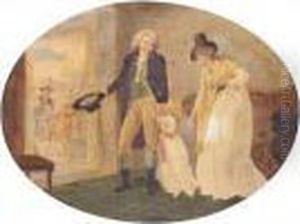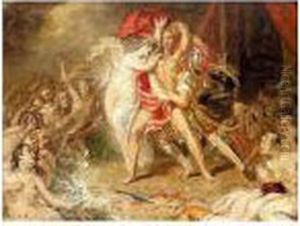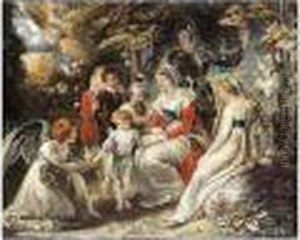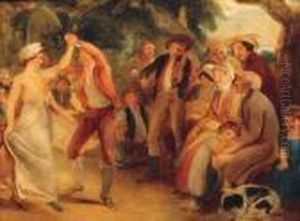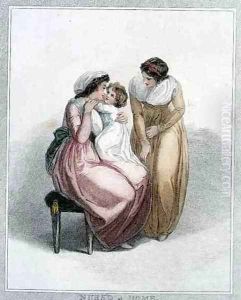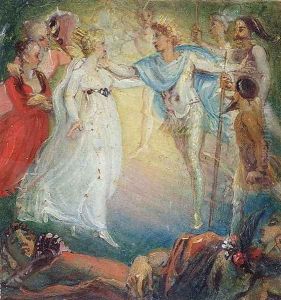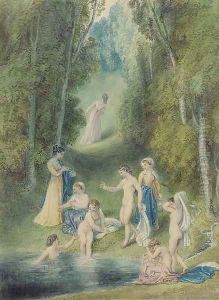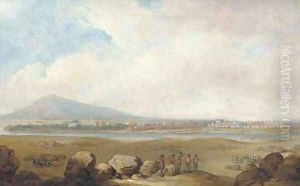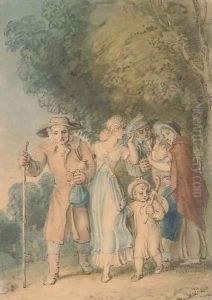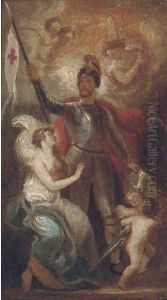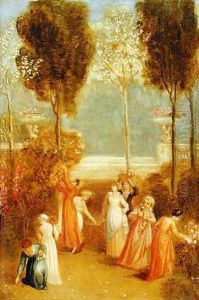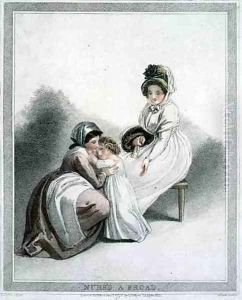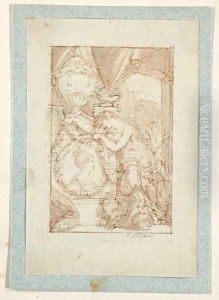Thomas Stothard Paintings
Thomas Stothard was an English painter, illustrator, and draftsman, born in London on August 17, 1755. He developed a passion for art at an early age but initially pursued a career in silk pattern designing upon the advice of his widowed mother. His talents, however, were too pronounced to be confined to fabric design, and he soon enrolled at the Royal Academy Schools to further his education in the arts.
Stothard's career took a significant turn when he started to provide illustrations for books, which became his primary source of income and fame. His elegant designs graced the pages of works by esteemed authors such as Samuel Richardson and Laurence Sterne. He also provided illustrations for an edition of 'The Pilgrim's Progress' and for Alexander Pope's translation of Homer's works.
His style was characterized by its graceful, neoclassical elegance and a keen sense of composition and narrative. Stothard's illustrations were widely celebrated for their beauty and clarity, influencing the design and illustration of books well into the 19th century.
Apart from his illustrious career as an illustrator, Stothard also achieved success as a historical painter. One of his most famous works is 'The Procession of the Flitch of Bacon', which was exhibited in 1809. The painting depicted a quaint English custom and was lauded for its rich detail and procession-like composition, a hallmark of Stothard's painting style.
In 1794, Stothard was elected an associate member of the Royal Academy and became a full member in 1794. His contributions to art were recognized by his appointment as librarian to the Royal Academy in 1810, a position he held until his death.
Thomas Stothard's legacy includes an extensive body of work that encompasses thousands of book illustrations, numerous oil paintings, watercolors, and sketches. His work continues to be appreciated for its historical value and its aesthetic beauty.
Stothard lived a productive and successful life until his death on April 27, 1834, in London. His influence on the fields of book illustration and historical painting remained significant long after his passing, and his works are still studied and admired today.
